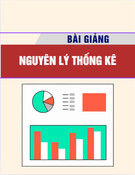
2
Toán rời rạc
NGUY N ĐC NGHĨAỄ Ứ
B MÔN KHOA H C MÁY TÍNHỘ Ọ
ĐI H C BÁCH KHOA HÀ N IẠ Ọ Ộ
TEL: 0438696121 (OFF), 0903210111 (MOB)
NGHIAND@IT-HUT.EDU.VN

3
Toán rời rạc
Đề nghị với các lớp trưởng
Hãy gửi cho tôi danh sách lớp theo địa
chỉ email đã nêu

4
Toán rời rạc
Toán rời rạc là gì?
What is discrete mathematics?
•Là bộ phận của toán học nghiên cứu các đối tượng rời rạc.
•Rời rạc bao hàm ý các phần tử phân biệt hay không liên tục.
•Các phép toán:
•Tổ hợp: Đếm các đối tượng rời rạc
•Các phép toán logic, quan hệ: nói lên mối quan hệ giữa các đối
tượng rời rạc
•Làm việc với: Các đối tượng rời rạc: tập hợp, mệnh đề.

5
Toán rời rạc
Định nghĩa hình thức - Wikipedia
Discrete mathematics, sometimes called finite mathematics, is the study of
mathematical structures that are fundamentally discrete, in the sense of not supporting
or requiring the notion of continuity. Most, if not all, of the objects studied in finite
mathematics are countable sets, such as the integers.
Discrete mathematics has become popular in recent decades because of its
applications to computer science. Concepts and notations from discrete mathematics
are useful to study or express objects or problems in computer algorithms and
programming languages. In some mathematics curricula, finite mathematics courses
cover discrete mathematical concepts for business, while discrete mathematics courses
emphasize concepts for computer science majors.
Discrete mathematics usually includes :
•logic - a study of reasoning
•set theory - a study of collections of elements
•number theory
•combinatorics - a study of counting
•graph theory
•algorithmics - a study of methods of calculation
•information theory
•the theory of computability and complexity - a study on theoretical limitations on algorithms …






![Bài giảng Toán rời rạc 1: Bài toán đếm - Ngô Xuân Bách [Mới nhất]](https://cdn.tailieu.vn/images/document/thumbnail/2024/20241231/tambang1206/135x160/431735607183.jpg)




















